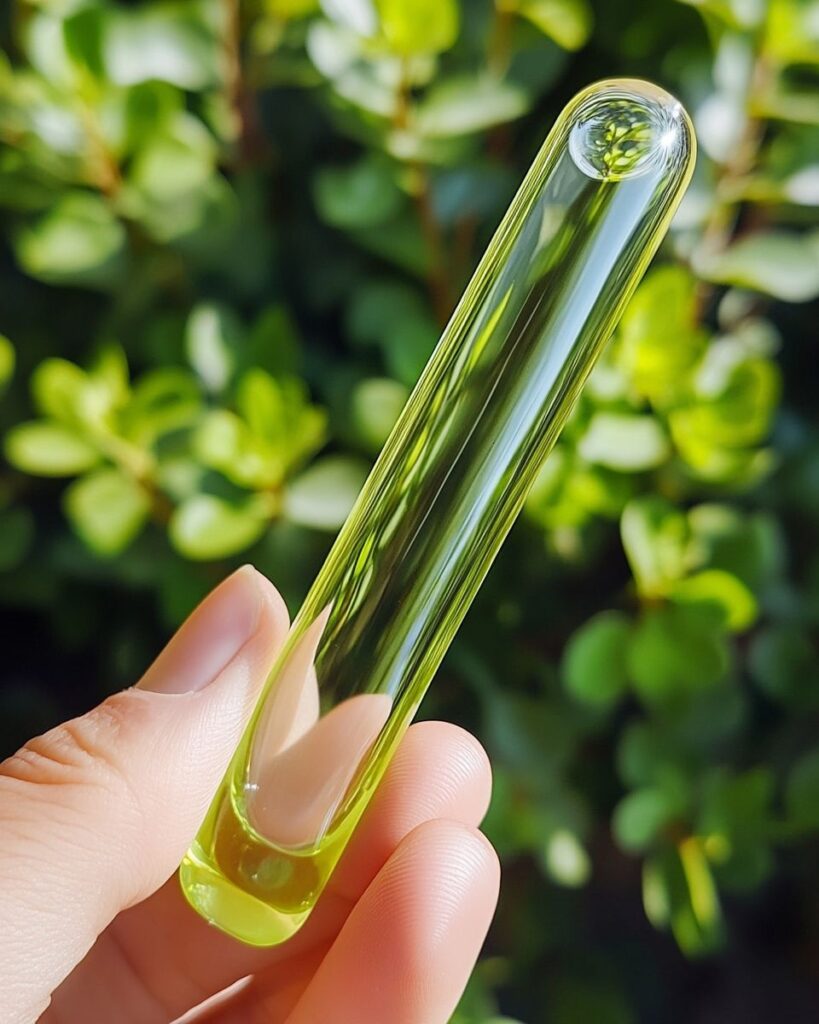Stumbled upon a solid glass stick with rounded ends in the woods. What on earth is this thing?
Morgan Reed
Contributing Writer
Print this recipe
While wandering through the serene and leafy expanse of the local woods, I stumbled upon an unusual object partially buried in the undergrowth. It was a solid glass stick with rounded ends, glistening in the dappled sunlight filtering through the trees. This unexpected find sparked a curiosity that led me on a journey to uncover its origins and purpose.
Initial Impressions and Descriptions
The object was about a foot long, cylindrical, and surprisingly heavy for its size. Its surface was smooth and clear, with no visible markings or engravings. The ends were rounded, giving it a baton-like appearance. It seemed too refined to be a mere piece of discarded glass, suggesting it had a specific function or significance.
Historical Context: Glass Objects in Everyday Use
Glass has been used for centuries in various forms, from decorative items to practical tools. In the 19th and early 20th centuries, glass was a popular material for household items due to its versatility and aesthetic appeal. Objects like glass rolling pins and muddlers were common in kitchens, while glass rods were used in scientific and industrial applications.
Speculation: Could It Be a Glass Rolling Pin?
One possibility is that this glass stick is an old-fashioned rolling pin. Glass rolling pins were once popular for their smooth surface, which made them ideal for rolling out dough without sticking. The rounded ends could serve as handles, and the weight would help in evenly flattening pastry. However, the absence of any flour or dough residue makes this theory uncertain.
Alternative Theory: The Case for a Glass Muddler
Another plausible explanation is that the object is a glass muddler, used in bartending to mash or muddle fruits, herbs, and spices in cocktails. The rounded ends would be perfect for crushing ingredients against the sides of a glass. This theory aligns with the object’s size and shape, but its presence in the woods remains puzzling.
Exploring Other Possible Explanations
Beyond culinary and bartending tools, the glass stick could be a component of an art installation or a piece of scientific equipment. Glass rods are used in various scientific experiments, particularly in chemistry and physics. Alternatively, it might be a decorative item that was part of a larger glasswork piece, accidentally or intentionally discarded in the woods.
Expert Opinions and Insights
To gain further insight, I consulted with experts in glassware and historical artifacts. A local historian suggested it might be a relic from a nearby settlement or homestead, while a glass artist speculated it could be a piece of art or a prototype. Their insights highlighted the object’s potential historical and artistic significance.
The Role of Glass in Art and Design
Glass has long been a favored medium for artists and designers due to its unique properties. Its transparency, malleability, and ability to capture light make it ideal for creating visually stunning pieces. The glass stick could be a remnant of an artistic endeavor, intended to evoke curiosity and wonder.
Safety Considerations and Handling
Handling unknown glass objects requires caution. Glass can be fragile and may have sharp edges if broken. It’s important to inspect the object for any cracks or weaknesses before handling it extensively. Wearing gloves and storing it in a safe place can prevent accidents and preserve its condition.
Conclusion: The Enigma of the Glass Stick
The glass stick remains an enigma, a mysterious artifact whose origins and purpose are yet to be definitively determined. Whether a forgotten kitchen tool, a piece of art, or a scientific instrument, its discovery adds a layer of intrigue to the woods. It serves as a reminder of the unexpected stories and histories that can be uncovered in the most unlikely places.

